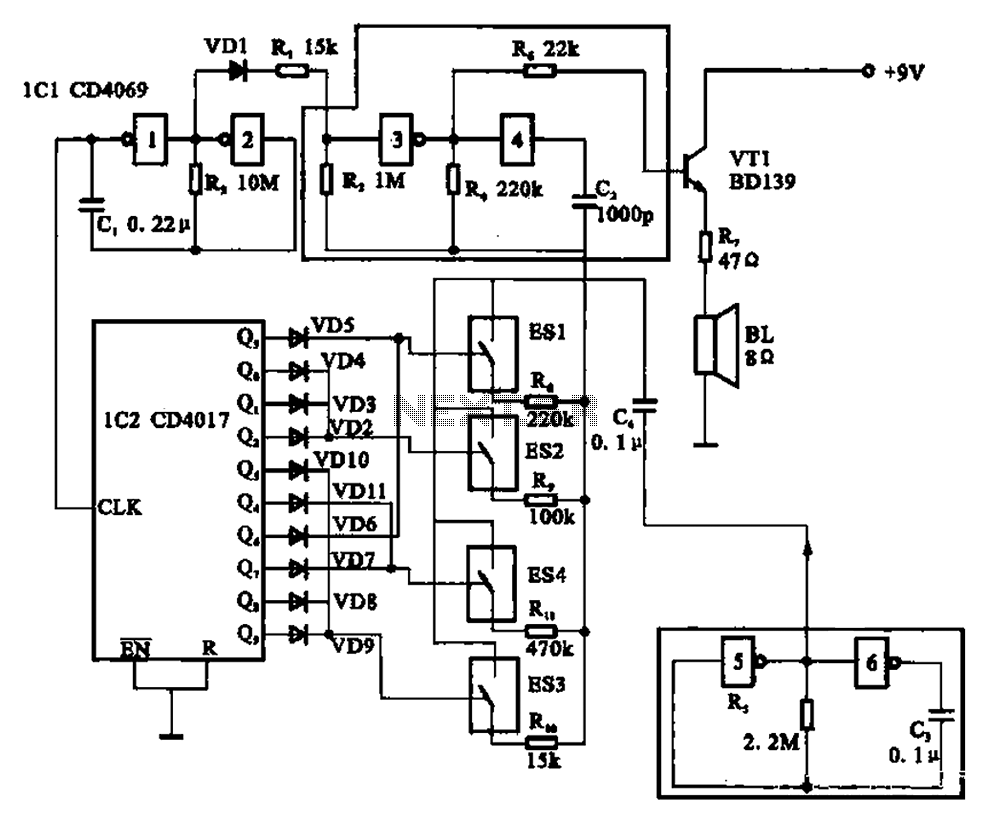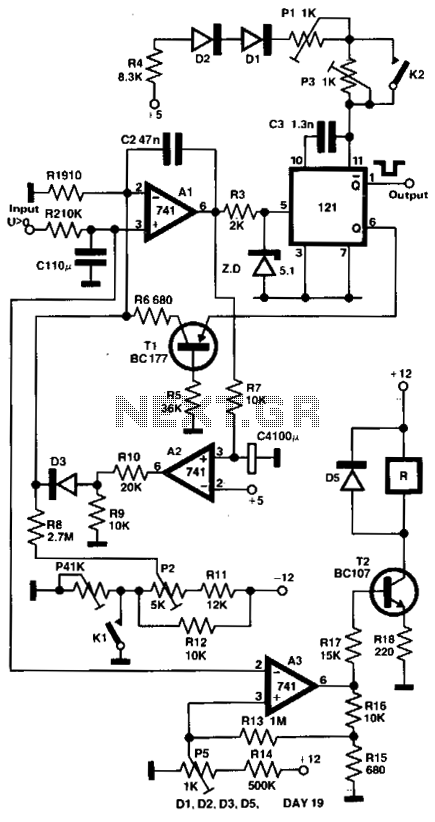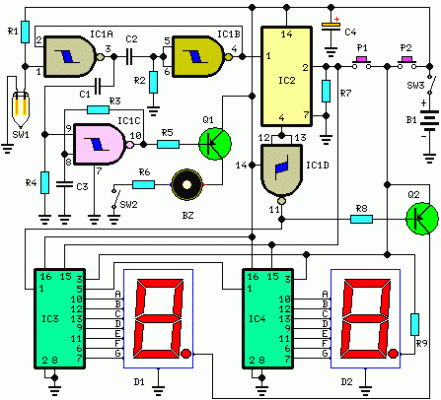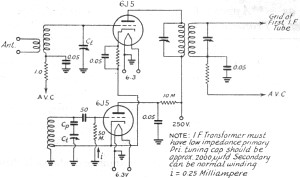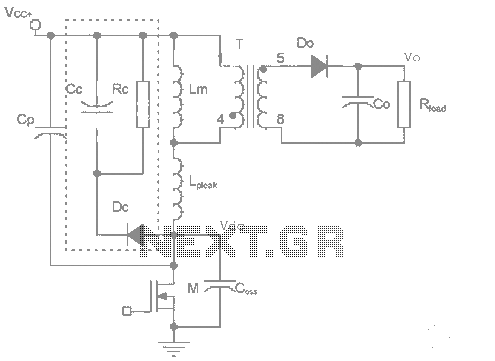
analog to digital converter ad7781

The AD7781 is a complete low-power front-end solution for bridge sensor products, including weigh scales, strain gauges, and pressure sensors. It contains a precision low-power 20-bit sigma-delta ADC, an on-chip low-noise programmable gain amplifier (PGA), and an on-chip oscillator. Consuming only 330 µA, the AD7781 is particularly suitable for portable or battery-operated products.
The AD7781 integrates several key components that enhance its functionality for various applications in sensor measurement. The 20-bit sigma-delta ADC provides high-resolution data conversion, enabling accurate readings from bridge sensors. This high level of precision is crucial for applications such as weigh scales and strain gauges, where minute changes in input signals must be detected and processed.
The on-chip programmable gain amplifier (PGA) allows for flexible signal conditioning by adjusting the gain of the input signal before it is fed into the ADC. This adaptability is beneficial when working with sensors that output varying signal levels, ensuring that the ADC operates within its optimal range to maximize performance and accuracy.
Additionally, the low-noise characteristics of the PGA contribute to the overall signal integrity, minimizing the impact of external noise sources that could affect measurement accuracy. The integrated oscillator simplifies the design by eliminating the need for external timing components, thereby reducing the overall circuit size and complexity.
With a power consumption of only 330 µA, the AD7781 is designed for efficiency, making it an excellent choice for battery-operated devices. This low power requirement helps extend the operational life of portable applications, such as handheld weighing devices and remote sensing systems.
The AD7781's architecture is optimized for low power and high performance, making it suitable for a wide range of industrial and consumer applications. Its ability to deliver precise measurements in a compact and energy-efficient package makes it a valuable component in modern electronics that require reliable sensor data acquisition.The AD7781 is a complete low power front-end solution for bridge sensor products, including weigh scales, strain gages, and pressure sensors. It contains a precision low power 20-bit sigma-delta (?-?) ADC, an on-chip, low noise programmable gain amplifier (PGA), and an on-chip oscillator.
Consuming only 330 ?A, the AD7781 is particularly suitable for portable or battery-operated products.. 🔗 External reference
The AD7781 integrates several key components that enhance its functionality for various applications in sensor measurement. The 20-bit sigma-delta ADC provides high-resolution data conversion, enabling accurate readings from bridge sensors. This high level of precision is crucial for applications such as weigh scales and strain gauges, where minute changes in input signals must be detected and processed.
The on-chip programmable gain amplifier (PGA) allows for flexible signal conditioning by adjusting the gain of the input signal before it is fed into the ADC. This adaptability is beneficial when working with sensors that output varying signal levels, ensuring that the ADC operates within its optimal range to maximize performance and accuracy.
Additionally, the low-noise characteristics of the PGA contribute to the overall signal integrity, minimizing the impact of external noise sources that could affect measurement accuracy. The integrated oscillator simplifies the design by eliminating the need for external timing components, thereby reducing the overall circuit size and complexity.
With a power consumption of only 330 µA, the AD7781 is designed for efficiency, making it an excellent choice for battery-operated devices. This low power requirement helps extend the operational life of portable applications, such as handheld weighing devices and remote sensing systems.
The AD7781's architecture is optimized for low power and high performance, making it suitable for a wide range of industrial and consumer applications. Its ability to deliver precise measurements in a compact and energy-efficient package makes it a valuable component in modern electronics that require reliable sensor data acquisition.The AD7781 is a complete low power front-end solution for bridge sensor products, including weigh scales, strain gages, and pressure sensors. It contains a precision low power 20-bit sigma-delta (?-?) ADC, an on-chip, low noise programmable gain amplifier (PGA), and an on-chip oscillator.
Consuming only 330 ?A, the AD7781 is particularly suitable for portable or battery-operated products.. 🔗 External reference
